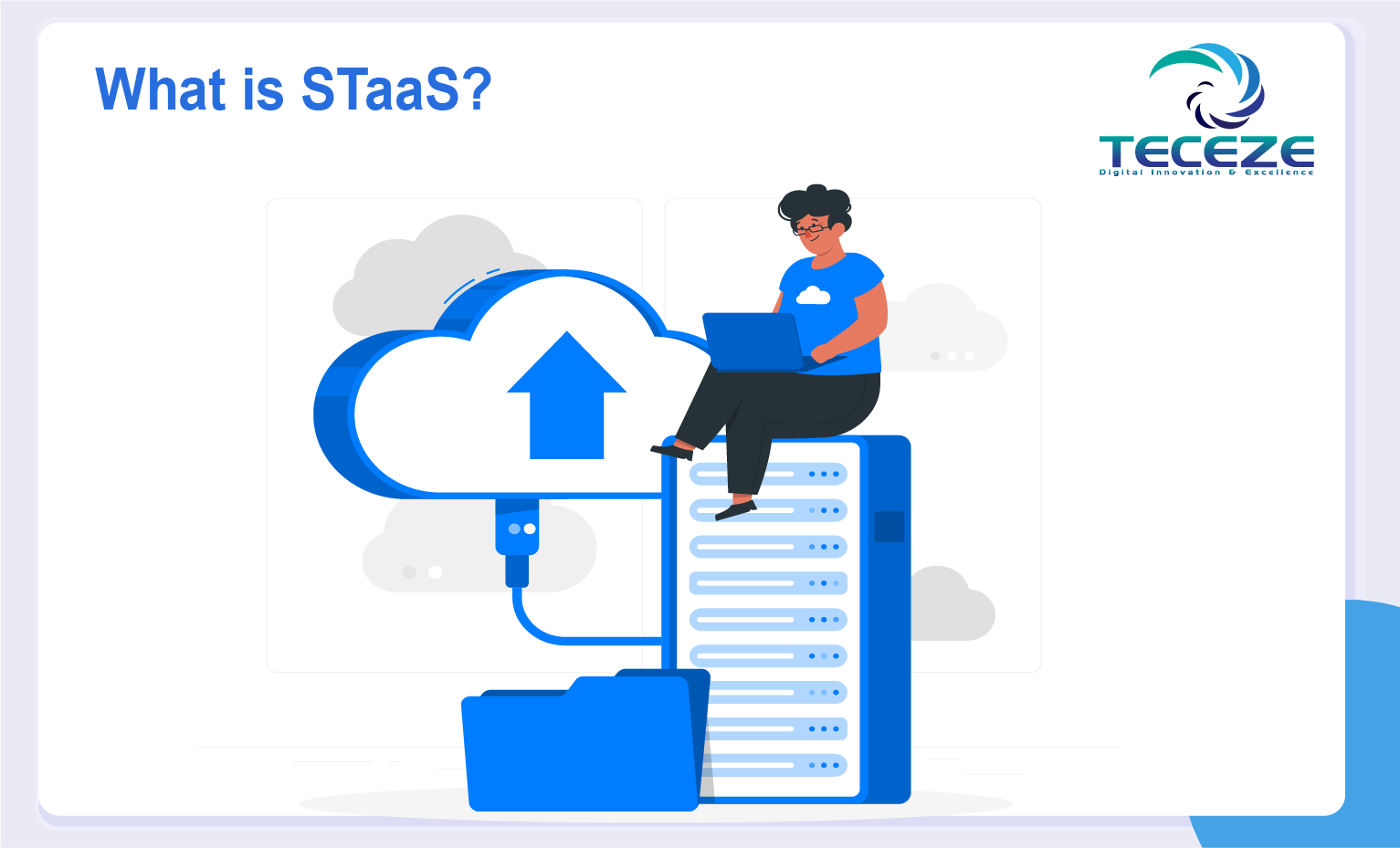What Is STaaS (Storage as a Service)?
Table of Contents
Advantages of Storage as a Service (STaaS)
Originally, Storage as a Service (STaaS) was seen as a cost-effective way for small and medium-sized companies without the technical staff and budget control to develop and manage their storage infrastructure. Lately, companies of all sizes have utilized STaaS. STaaS offers low-cost elastic storage, depending on its utilization. An integral part of Infrastructure as a Service (IaaS) and Platform as a Service (PaaS) is Storage as a Service (STaaS). It is a managed service where the provider offers access to a data storage platform for the end clients. The service can be provided from a single customer’s dedicated infrastructure on-premises, or it can be provided from the public cloud as a shared service procured by subscription and paid according to one or more useful metrics. Using standard device interface protocols or application program interfaces (APIs), STaaS clients access individual storage facilities.
Storage objects, bare-metal storage capacity, raw storage volumes, network file systems, and storage applications that allow file sharing and lifecycle management backup are some of the STaaS offerings. The client framework and the network it uses remain independent. This is a business practice where large corporations rent space to a smaller company or person in their storage infrastructure. Cyber Storage or Online Remote Storage is one of the most amazing cloud computing services.
Why STaaS?
STaaS is a viable alternative to installing and maintaining storage facilities for a small or mid-size company that lacks the operating budget and/or employees. This is also a way of mitigating disaster recovery costs, ensuring long-term record retention, and enhancing both business continuity and availability. For data transfers and redundant storage, and to recover any corrupted or missing data STaaS could be used. CIOs may want to use STaaS to immediately deploy resources or to substitute some existing storage space — leaving room for hardware for on-site storage. The ability to customize storage space and output per workload may also be appreciated by CIOs.
A network administrator using STaaS for backups can specify which data should be backed up on the network and how often it should be backed up. A Service Level Agreement (SLA) will be signed by the company, and the STaaS provider agrees to rent the storage space. It is based on a cost-per-gigabyte-stored and cost-per-data-transfer, and the company data will then be automatically migrated over the storage provider’s proprietary wide area network (WAN) or the internet at the agreed time. The network administrator can contact the STaaS provider and request a copy of the data if the company’s information is ever corrupted or lost.
There are 2 types of remote storage namely;
Object Storage – In this type of STaaS, end clients can store data such as documents, text, and PDF. If you have provided storage, you cannot change the filesystem and you cannot build any partitions either. The type of data storage is usually used in SAN environments where data, often known as blocks, is stored in volumes. Each block functions as an individual hard drive and the storage administrator configures it.
Examples: Google Drive, Dropbox
Block Storage – In this type of STaaS, it splits a file into individual data blocks and then stores the blocks as a single piece of information. Without having a file folder structure, a storage device may do this, since each block of data has a unique address. This enables the storage system to distribute the individual data blocks wherever it finds the most useful in the storage system. Whenever it is accessed, the storage system program pulls the appropriate blocks back together to assemble the file.
What are the Benefits of STaaS?
Some of the benefits of STaaS are
- It is cost-effective saving time and money
- No authorized access as it offers better security
- Backup is done with ease because of automation
- Accessibility
- Synchronized device updates
- File sharing is easy
- Collaboration
What are the disadvantages of STaaS?
Some of the disadvantages of STaaS are
- Users end up moving to the cloud their business-sensitive or mission-critical information, which makes it crucial to choose a reliable service provider.
- It could be costly if bandwidth limits are surpassed.
- Vendors can go through downtime times when the service is not available, which can be a concern for mission-critical information.
- Because the service provider owns and maintains the cloud infrastructure, it is less flexible.
- Migrating from one service to another can be hard.
Conclusion
Companies have become more data-driven and it’s the new standard. Captured data has inherent value to the entire enterprise from several sources. When it is combined with other public data sources using an analytical or intelligent cloud service, your data can have more importance. On a cloud network, 47% of marketing departments would have almost 60% of their apps.
So, if you already have a storage system running and feel confident that your information is protected, then you better give it another thought. If you have branch offices located around the globe and work on the data generated by your data storage appliance, then imagine if your central location gets hit by a natural disaster. In such scenarios, your data will crumble, and the remote users will not be able to access the data and therefore, the continuity of the business will fall into grave danger.
However, if you have your data storage appliance synchronized to the cloud storage? All your enterprise data will then be secure in the cloud and can be accessed from anywhere in the world by any of your approved employees. Thus, certainly ensuring business continuity.
STaaS is a viable alternative to installing and maintaining storage facilities for a small or mid-size company that lacks the operating budget and/or employees.
 Back to Insights
Back to Insights
 Previous
Previous 